Aviator sunglasses: How do you wear them?
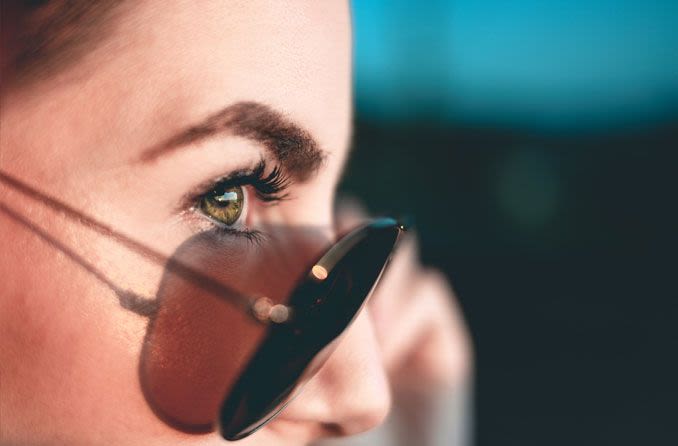
So, you like the way aviator sunglasses convey competence and command. You want that fighter-pilot vibe of confidence and precision.
But how do you wear aviator sunglasses if you want to make sure you send the right message at the right time in the right place? That depends on how you use them.
Aviators fill one role on a construction site and another during a power lunch at a trendy sidewalk café. Let’s walk through some of these scenarios:
Doing a job
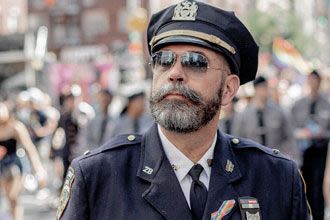
Ray-Ban introduced its classic Aviator sunglasses in the late 1930s with a specific objective in mind: protecting and clarifying the vision of pilots. Their lightweight wire frames and darkened lenses were comfortable and functional, cutting down glare and helping pilots see the world around them. A horizontal bar connecting the frames kept sweat out of pilots’ eyes.
Aviators exude authority and precise control, making them an excellent fit for:
Military officers, EMTs and firefighters, police and correctional officers
Managers, crew leaders, architects and engineers on outdoor work sites
Bus drivers, heavy machinery operators and power line technicians
This is just a short list. Pretty much anybody whose job takes them outdoors can enjoy the practical and psychological benefits of wearing aviator sunglasses.
SHOPPING FOR AVIATORS? Find an optical store near you.
Launching an adventure
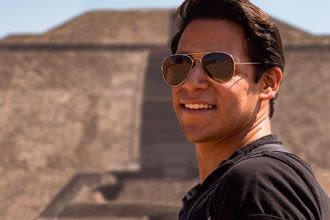
Aviators provide straightforward eye protection if you’re into ski touring, mountain climbing or sailing the ocean blue. The more glare you deal with, the more likely you’ll need anti-reflective lenses that deflect more of the sun’s UV rays. You might also need to attach side shades to provide the fullest sun-blocking.
Another option: wire frames that wrap behind the ear. That keeps your shades from falling off while you’re tumbling down a double-black-diamond ski slope or ziplining through the jungle canopy of Costa Rica.
Playing a sport

Aviators pair well with a brimmed hat to keep solar rays from leaking in over the top or the sides of the frames. Thus, they’re good to wear when running, playing softball or getting in an outdoor workout.
But if you play golf or beach volleyball and must have head-hugging wraparound sunglasses, don’t try to make aviators do a job they aren’t designed for.
Kicking back and hanging out
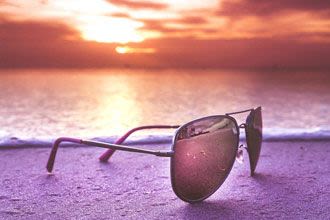
Aviator shades are fine at the beach, in an outdoor café or strolling an arts and crafts fair. But they do signal toughness and a can-do spirit. If that’s the real you, then go for it.
But if you’re more laid-back in the Wayfarer-style mode, aviators might give the impression you’re trying too hard.
Making a fashion statement

Gen. Douglas MacArthur made aviators famous during his return to the Philippines in World War II. There’s a time and place for announcing “I can send troops into combat,” so make sure your aviators fit your situation.
Aviators are more functional than overtly stylish. They look better with casual clothes like blue jeans and a T-shirt than with a custom-tailored suit.
If you’re going to an outdoor power lunch, you might want your shades to give a more businesslike impression.
What to look for in aviator sunglass frames

The conventional aviator frame has teardrop-shaped lenses, wire frames and a horizontal bar across the top. Over the years, sunglass designers have modified the look and feel of aviators to broaden their appeal.
Today, there are so many variations in shapes and frame materials that you can easily find one that suits your personal style and practical needs.
Some aviators are more squared off at the bottom. Other models sport a curved shape that fits your head snugly and blocks more sunlight than conventional aviators do.
Materials run the gamut from aluminum to titanium to molded plastic. The temple arms come in multiple styles with varying degrees of grip and comfort.
Choosing aviator lenses
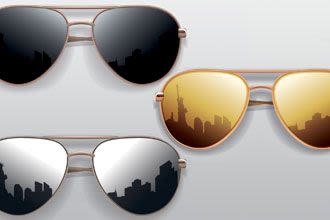
Select your aviator lenses with care. The tint and material affect performance and your public perception.
Green, gray and black. These lens tints work well with the widest range of outdoor light, from sunny to partly cloudy to foggy or low light.
Brown/amber. These lens tints let more light pass through, which helps you identify different colors, but they have less flexibility than black, gray or green. They’re best for sunny and partly cloudy days.
Gradated. Lenses that are dark at the top and lighter at the bottom give you more flexibility, helping you see more details in the lower field of vision while blocking solar rays at the top.
Polarized. High-glare places like highways, beaches and ski slopes often require polarized lenses. They’re especially valuable when driving late in the afternoon or after a rainstorm.
Mirrored. Astronauts, test pilots and ski tourists wear mirrored lenses because they reflect solar rays, providing the most protection. Mirrored lenses can intimidate, so choose them with care in social settings.
All these factors underscore the enduring appeal of aviator sunglasses. They’re lightweight and comfortable whether you’re working or playing. They give off an aura of cool-headed control. You’ll have a tough time finding a better blend of style and substance in any variety of sunglasses.
KNOW WHICH SUNGLASSES YOU WANT? Find an optical store near you and start shopping.
Page published on Friday, September 6, 2019






